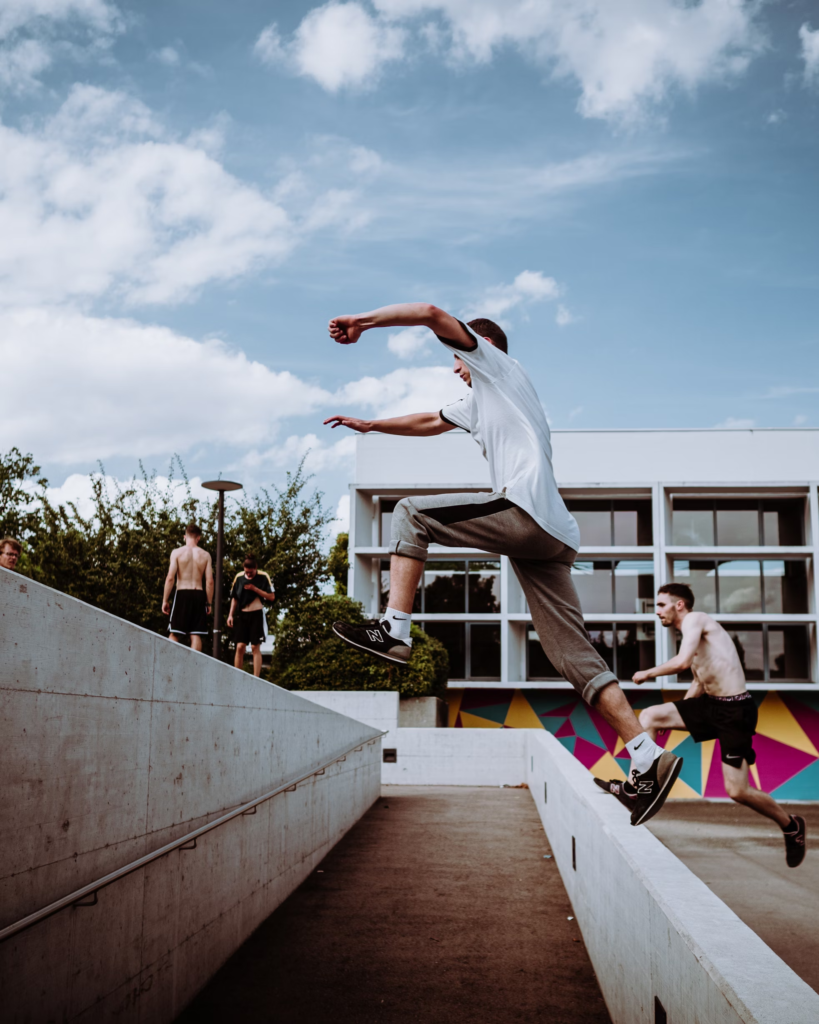Is Parkour a Real Sport?

Parkour, the art of moving efficiently and creatively through any environment, has captivated imaginations with its fluid grace and daring challenges. But does it qualify as a “real” sport? The answer, like a parkour practitioner navigating an obstacle course, isn’t as straightforward as a simple vault.
Arguments for Parkour as a Sport:
- Physical Demands: Parkour requires immense physical fitness, demanding strength, agility, balance, and proprioception. Practitioners train rigorously, pushing their bodies to their limits, much like athletes in traditional sports.
- Skill Development: Mastering parkour involves acquiring and refining complex movement skills, from precision jumps and vaults to dynamic rolls and wall climbs. This intricate skillset mirrors the technical expertise honed in other sports.
- Competitive Potential: While traditional parkour emphasizes individual expression and overcoming personal challenges, competitions like Red Bull Art of Motion and Parkour World Championship showcase competitive aspects, with athletes judged on creativity, flow, and difficulty of execution.
- Recognition: Parkour is gaining official recognition. The International Parkour Federation and national federations like Parkour UK work towards standardizing competition formats and potentially seeking inclusion in major sporting events.
Arguments Against Parkour as a Sport:
- Philosophical Roots: Parkour originated as a discipline focused on self-expression, overcoming personal obstacles, and navigating the environment, not on competition or winning. Some practitioners feel formalizing it into a sport contradicts its core philosophy.
- Focus on Individuality: Unlike team sports, parkour prioritizes individual achievement and expression. While competitions exist, they often differ from traditional formats, emphasizing flow and creativity over direct competition.
- Safety Concerns: Parkour inherently involves calculated risks and potential for injury. The emphasis on individual responsibility and pushing personal limits might differ from the structured safety measures emphasized in organized sports.
- Lack of Standardization: Compared to established sports with standardized rules and equipment, parkour’s freestyle nature and reliance on the surrounding environment pose challenges to creating uniform competition formats.
Ultimately, defining “real sport” hinges on perspective. Parkour undeniably requires athleticism, skill, and dedication, aligning with core aspects of sports. However, its philosophical roots, emphasis on individual expression, and unique safety considerations create nuances that blur the lines.
Perhaps the true beauty of parkour lies in its defiance of rigid categorization. It’s a discipline of movement, self-discovery, and creative expression, pushing boundaries and inspiring awe, regardless of whether it fits neatly into the box of “sport.” And that, in itself, is a powerful achievement.
